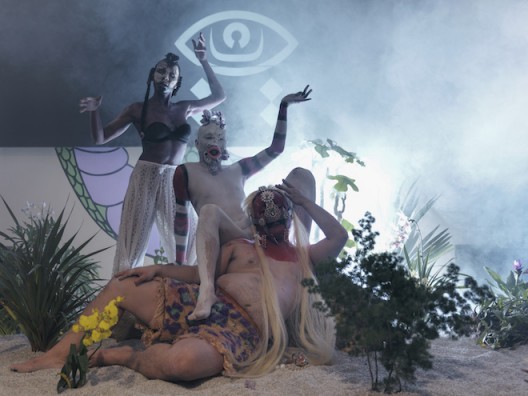by Chris Moore
Combining acumen, chutzpah and luck, Jens Faurschou became Denmark’s foremost gallerist and art dealer. It is a story, that along the way, has involved Picasso, Miro, Munch, Robert Rauschenberg – and Swedish banks. In 2007, Jens expanded his Copenhagen gallery to Beijing. In 2012 Jens closed his gallery, in order to run a foundation in its stead. He converted the existing gallery space in 798 to this foundation, and opened a 1,500 square meter museum space in Copenhagen’s seaside Nordhavn district. Soon the foundation will expand to New York. He also found time to launch a Kunsthalle, Copenhagen Contemporary.
Beginnings
Chris Moore: Let’s start with how you got involved with art and I guess that will lead on to how you got involved with China.
Jens Fausrschou: I was born in Odense on the island of Funen, in the same city as Hans Christian Andersen. I grew up and studied business economics there. I then moved to Copenhagen to continue my studies. There was a small ad in the newspaper looking for a student who knew about accounting systems and was interested in art. And I thought “Well, I am interested in art!” It was for an art library, the concept of which was that you could go there to borrow art. They had a small bus, where you could put paintings in – all kinds of small paintings standing there on racks. And this bus was driving around Denmark and the big clients were companies, who borrowed art – maybe around 15 paintings at a time – and this bus came by, maybe once a month, and then they had the possibility of exchanging the paintings – not all, maybe just two. The system’s records were run like a library card catalogue. My first job was to put this in a pc – the first one I ever laid hands on. This was around 1983.
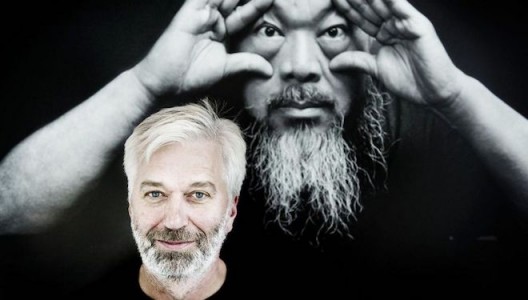
Before I finished my studies, I opened my gallery in 1986. I got interested in the art market.I was generally very interested in how pricing was decided upon, and how prices were made in the art market.
Pierre Alechinsky
CM: What sort of artists were you working with – Danish? International?
JF: Young Danish artists to begin with, and, actually, the first exhibition was for an Icelandic painter who lived in Denmark. Already within the first year, I found out that it was not so easy to just put up a show and people would then line up and buy art. However, the art market was already pretty strong in ’86 and ‘87, and then in ’88 and ’89 it went crazy. There was a dealer from another part of Denmark, who came in during our first show. Not too many galleries existed in the country then – maybe only 5 galleries in Copenhagen at that time, or maybe even less – and this private dealer brought a painting by the Belgian artist, Pierre Alechinsky (b. 1927) with him. He asked: “Would you like to have this consigned?” And I said, “Yes, of course!” So, I got it, and put it in my back room (by then, I had learned you have to have a ‘back room’). It was very simple, in fact, this first space that I had, together with my now former wife, Luise. We had to make a living out of it from day one. Actually, we started off with a student loan, in order to get the key to the space. Then, this art dealer came along with my first consignment. The most expensive works that we had were maybe 10,000 Danish crowns, which, at the time, was the equivalent of about 1,000 USD. This painting by Alechinsky was maybe USD 15,000 – it was a small one. A few days later, a woman in a fur coat comes in and says: “Do you have a painting by Pierre Alechinsky?”
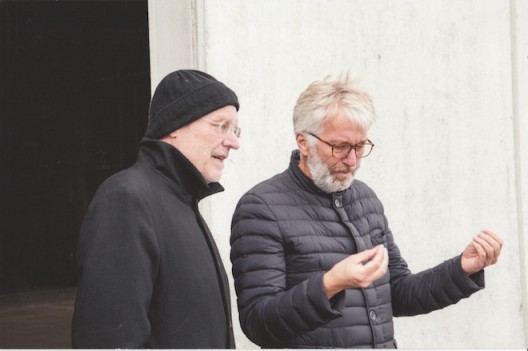
You have to understand that, in the ‘80s, Cobra was the art market in Denmark. So, Alechinsky was very hot. I said: “Yes, of course!’ and I took the painting out for her to look at. It was 145,000 krone (Danish Crowns). Then she asked for a discount but I had very little commission, so I explained: “I cannot, this is the price you have to accept.” Then she took out a cheque book, and wrote a cheque for 145,000 krone. Having still just arrived to the city of Copenhagen from the island of Funen, I didn’t understand it! I couldn’t understand that money could come so easily, that you could just write a cheque for that enormous amount of money. I had to think quickly because I had to make sure this cheque was valid. So I told her that I would bring the painting to her home in two hours and help her install it. She said thank you and left. I put the painting in the back of my car and drove to the bank and cashed the cheque. Then, I went to install the painting. The buyer was a lovely woman, and her purchase was my first sale of international art, and it changed a lot for me. I then thought, ‘Oh, that is easy!’ Then Iwent to Paris. I have made up my mind to organize a show of Pierre Alechinsky there and approached Galerie Lelong [who represented Alechinsky] with this idea. Jean Fremont [one of Lelong’s founders] was there. He was very nice, showed me some paintings, and explained that it was not easy to get a show, but that all of these paintings were, of course, for sale. So, I thought, if I go back and gather some money, then I can put up a show. I proceeded to approach some private contacts, and each came up with a little money – I think I had five people – and I talked to the bank, and proposed to them that if I raise some money, they would double it. They accepted, and so I went back to Paris, and brought our first exhibition of an international artist to Copenhagen. And we had great success with it because it was the hottest you could have at the time.
CM: You’ve been very lucky then.
JF: Yes, you have to have luck! Luck is very important. Also, it is important to just not give up. If you want something, you have to go for it!
CM:It’s still quite astonishing just to hear that now though. I wonder if it’d be possible doing the same thing now. I’m not sure it would.
JF: It was different at the time. Today the art market is global. We had borders in Europe back then. There were customs and borders that you had to pass. And you didn’t have the internet. There were art fairs, but not like today. I think it was good for them [Lelong] to have someone in Copenhagen.
CM: This is the other thing: you weren’t starting in Paris or New York, you were in Copenhagen.
JF: Yes, if it had been London instead, they would have said they already have other entrances there.
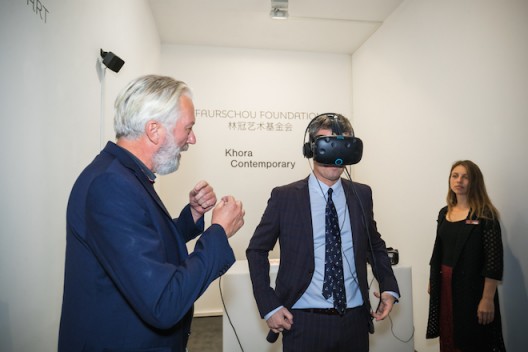
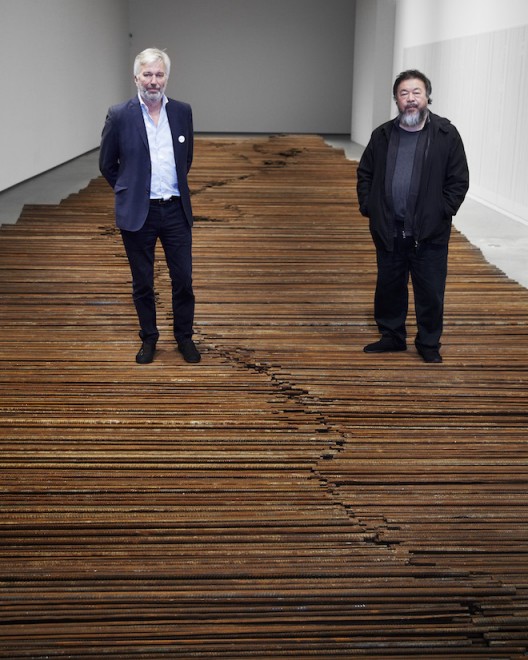
CM: So where did you go from there? How did things develop?
JF:In Danish, I would use the expression, this is when I got “blood on the teeth” – meaning, this is when I got my first taste of what I loved doing up until the very present. I started making many trips to New York – Actually, through this, sometimes if you talk to dealers, you hear that they survived for one year just on one client. I had a client there who bought most works from the aforementioned Alechinsky show – the big pieces. Then I was in New York, and I was recommended to meet with a private dealer, and he quickly gave me the impression not to waste his time. Since he was selling a lot of Warhol, I challenged him with the following: “Get me the queen of Denmark on canvas”. I think Warhol made two or three canvases of our queen. The dealer made one phone call and said ‘Let’s go!’ He took his camera and a film – it was the time before digital – and we went to a warehouse, and this painting of our queen was pulled out, and we shot this film of it. I was flying back to Copenhagen the next day and I said ‘I will call you tomorrow. I might have a client for you.’ When I flew back I made a list of five people to go to and at the top was this guy who bought all the Alechinskys. When I landed in the morning, I was waiting for it to be 10 o’clock, so I could get the photos developed. By 11 I had these photographs and I had already called the guy. I went to his office, showed him the photograph of the queen, and he bought it. So I couldn’t wait until it was 10 o’clock in New York to tell that it was sold. I think he was impressed.
That led to the next Warhol, which was “Liz and Her Man”. It was from the early 1960s, with a red splash in the middle. This was something you could do in the 80s – you couldn’t do it today: I could go into the galleries, and they would show me what they had in their backroom. I would tell them what I was looking for, and they would say: “This is what we have.” They would not show their works to each other, but [coming from Copenhagen], I could sell it to the neighbor gallery. I have made many deals like that. But with this one, I got this photograph, and I went to Christies, and they gave me an estimate, which was double what I had to pay, and my bank agreed to give me the money to buy it. And then, I took it directly to Christie’s and sold it. I wish I coud afford to keep it until now!
You could also buy things at auction in London, or maybe more the other way around – buy things in Copenhagen and sell in London, because you did not have the transperancy, which we have today, where you can just look everything up in the internet. At that time, people didn’t know. There could be very different prices between markets.
CM: So it was a type of arbitrage?
JF: Yes.
CM:So, at this point you are working, in many respects, as a classical secondary market art dealer.
JF: Yes. I continued doing exhibitions throughout the years, using the money [from dealing] to promote the younger artists, and make exhibitions.
CM: Do you see yourself more as a gallerist or more as an art dealer?
JF: I was a gallerist who was making his living by being a dealer.
The Crash
JF: When the art market crashed in 1990, I learned this sentence in New York: Stay alive until 95. It took five years. From 1990 to 1995, there were no buyers but there was a lot of great art available. In the late 80s, a lot of people had bought on pure speculation, especially in Japan and Sweden. The Swedish banks were full of art because they were the end ‘buyers’. People in Sweden could borrow money 100% against art. A lot of Swedish art dealers were crooks. They set up companies and bought paintings, maybe through Switzerland, and then on the [purchase] invoice they had to have someone to estimate the value, without needing to be professional. Just being an ‘art dealer’ could suffice. That way, they could sell from one company abroad to a company in Sweden at a higher value, and then they would cash in the profit. At the end [around 1990], the whole market collapsed at the same time as the real estate did, and many banks went bankrupt. It was really a tough time in Sweden. To deal with all the art owned by banks, the bank sector wrote-off the art and put it into a separate entity.
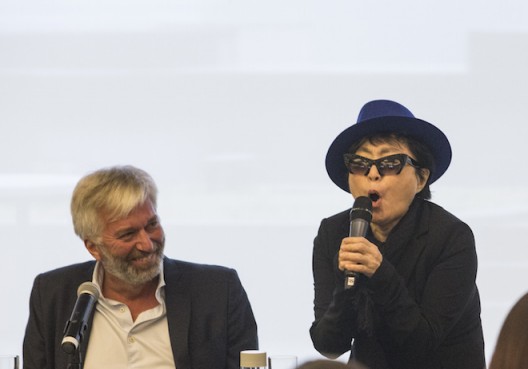
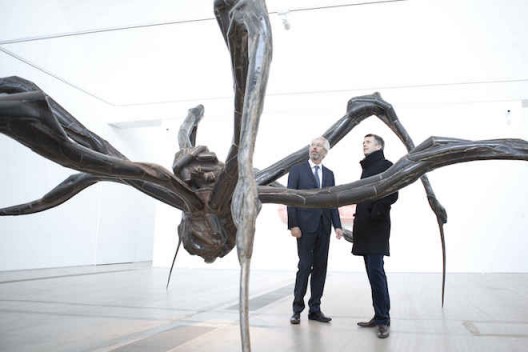
CM: —A “Bad Bank” for Art.
JF: It was interesting. If you put the paintings up for auction in London, they would not sell. So much was not sold and prices were very low. But in Sweden, if you went there, and brought cash, you could buy art for extremely cheap prices. So, that was how I survived in the 1990s, because there is always someone, somewhere who has cash, if it is cheap enough. I found people in Germany and Denmark, and went to Sweden, bought something there, and took it to Denmark. The biggest and most exciting [purchase] was in 1994. I had met someone wealthy in Munich. In the Swedish banks, there were often groups of paintings, depending on which bankruptcy they came from. There was this group of five Picassos and two Miros, and we could get them for 13 million Swedish Krone, which is nothing! Today you would not be able to buy a corner of these paintings for 13 million krone. The interesting thing was that the wealthy man from Munich then asked one of the auction houses, and they said, no, don’t trust it, it’s worth nothing, because they were trying to get them for themselves of course! And that gave him attitude, because he had this feeling that it was never a bad idea to buy Picassos and Miros, and so, he agreed to buy them through me. He sent the truck from Hasenkampf [a fine art logistics company] to pick up the works in Gothenburg. The truck was standing outside the bank and his assistant was up there too, [so] when she saw the paintings, she could call to confirm, and the money was transferred. And then we could start taking the paintings out to the truck.That was the biggest deal I had done at the time.
Edvard Munch
CM:You didn’t think, ‘Maybe I should keep hold of one of these?’
JF:I had to sell all of them. From 1990 to 1995, we had to make these kind of deals to survive. The gallery was suffering like crazy at the time, but I kept doing very exciting exhibitions. In 1993, Bruce Nauman (b.1941); In 1995, Mark Tansey (b.1949) – his first gallery show in Europe. We didn’t slow down!
In the late 1990s I started to deal in Edvard Munch (1863-1944) works. From 1998 to 2005, I sold most of the great Munch’s still in private hands. They are now in museums or major private collections. Munch made my business. I also initiated the project to make Munch’s Catalogue Raisonné in cooperation with the Munch Museum. Having made this catalogue is one of the things I am most happy about. I was saying to Norwegians: “You had 50 years to make this, why haven’t you done it?!”
If there is someone who wants a Munch today, they still call me. I still deal. I still have to make a living! So I always know what’s out there, but by Munchthere is very little.
In 2016 I founded Copenhagen Contemporary, the new institution for 21st century art in Copenhagen. It is a space to show huge installations. I don’t work on it daily, but I am on the board, and I initiated quite a few of its shows, including the opening exhibition with Bruce Nauman! The institution has now moved to its new location with even larger space. It opened in the summer of 2018 with shows by Doug Aitken and Superflex.
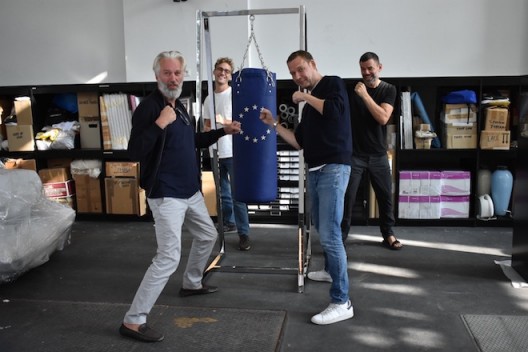
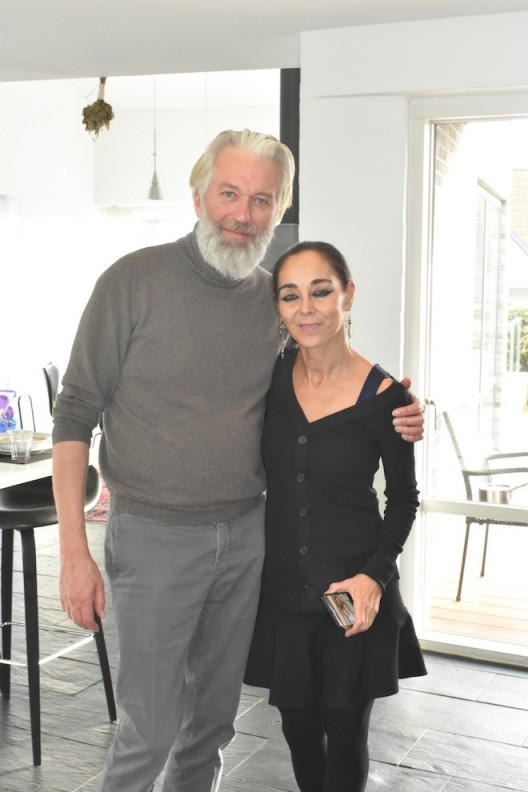
China and Robert Rauschenberg
CM:What pricked your curiosity about China?
JF: In 2006, one artist I was working with was invited to have an exhibition in Shenzhen. He asked me to accompany him, and we ended up in Beijing, where we visited 798. I saw this space, and it was raining, and the [space] was not yet developed – I fell completely in love with it. We decided to open Faurschou in Beijing in 2007.
CM: It was as simple as that? You just visited Beijing, saw an opportunity…
JF: We had been talking about opening somewhere else. We had been looking at London and New York. But I thought, [in Beijing] we can make a difference. In New York, it would just be another gallery. And it would be easier to work with some of the artists, because I couldn’t make a show in New York with, for instance, Robert Rauschenberg (1925-2008).
CM: Robert Rauschenberg was your first show in Beijing?
JF: Yes.
CM: Not a bad first show!
JF: In 1985, Rauschenberg was the first Western artist to have a show at NAMOC. He went there in 1982 as part of ROCI tour and then he was invited to exhibit in 1985. So that was one of the reasons I wanted to organize a show. I had organized exhibitions in Copenhagen as well as museum shows of Rauschenberg in Denmark. Rauschenberg sadly died during our inaugural show in Beijing. It was his last show, and he wanted to travel for the opening, but it was not possible.
When I held this exhibition of Robert Rauschenberg, Arne Glimcher, the owner of Pace, came in one day – we had worked together on the show – and he said to me: “Jens you have the most beautiful gallery space in the world! I want to be your neighbour!” I said I would help with the negotiations, as they take on a slightly different manner compared to what we are used to in the West. So, as a result I was very pleased to get Pace as our neighbours.
CM:There were not many international galleries there at the time. Continua was there. Urs Meile was there, and the Chinese galleries like Beijing Commune and Long March Space. As big as 798 appeared to be, at the time, it was probably no bigger than Copenhagen when you started!
***
JF: We mostly showed Western art. We also showed Ai Weiwei and Liu Wei (b.1972) – a two-person show.
CM: Were you also bringing Chinese artists to Copenhagen?
JF: So far, we have shown Liu Xiaodong, Ai Weiwei, and Cai Guo-Qiang in Copenhagen. The biggest show was Cai Guo Qiang, in 2011. That was when I stopped running the gallery, and opened the foundation in the North Harbour of Copenhagen with a huge show.
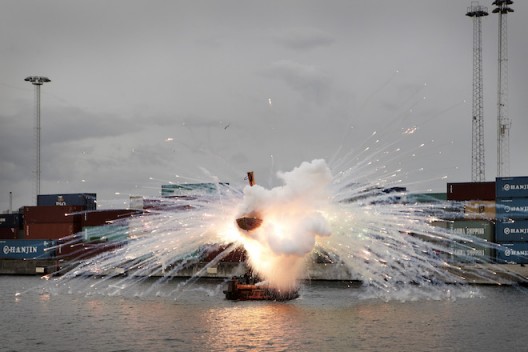
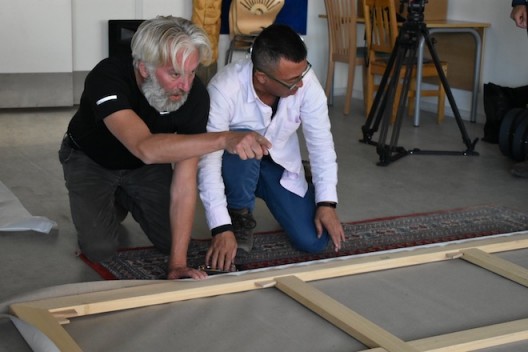
Foundation.
CM: Why did you stop running the gallery? Why did you convert the gallery to a foundation?
JF: After 25 years as a gallerist… Well, you asked me about my identity as a gallerist or as an art dealer; whenever I woke up in the morning, I had this ‘gallerist’ hat on – I always asked myself, “what can I do for my artists?” Whenever I was out at social events, talking with curators, museum directors, collectors, I was always asking myself that question. I was always talking about the artist. So, I think my identity was more that of a gallerist, because I was always trying to promote my artists. But if you ask my bank, they would probably say I was an art dealer. It was funny though, because I remember, through the 90s, here in Copenhagen, there were some gallerists who saw me as a pure art dealer. They were only ‘gallerists’ but I think it is all connected. That has changed a lot though. It’s not so important now. That is why I decided to convert the gallery to a foundation – instead of devoting myself to promoting artists and the selling of their works, I wanted to focus more on exhibition-making.
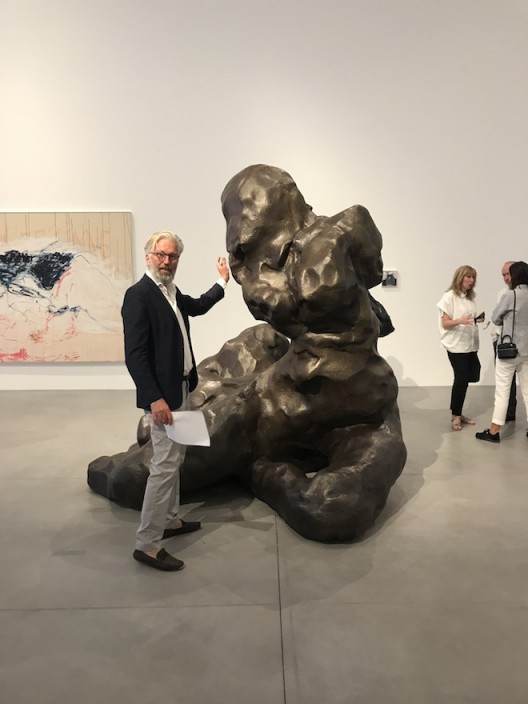
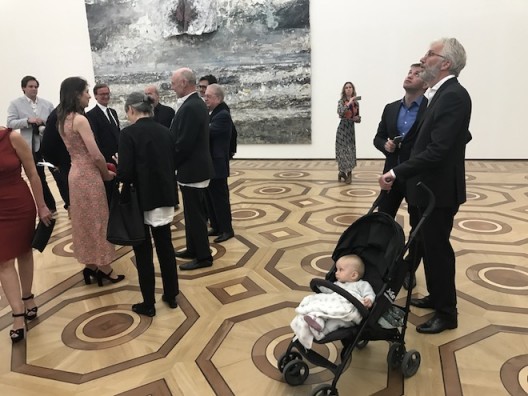
CM: And how does the space in Copenhagen work?
JF: We decided that, from 2012, all our shows would be non-commercial. You cannot buy from the exhibitions. They are from our collection or partly from other collections. We have 1,500 square metres of space, including 900 square meters of exhibition space.
CM: And what now?
JF: From here, I will take the challenge and see if we can open a space in New York! In Brooklyn , we have found a warehouse – about 1,800 square meters – which we are renovating and plan to open in the fall 2018. So, first, we take Beijing, and then we take Manhattan!
CM: Or Brooklyn!
JF: It’s in Greenpoint – North of Williamsburg and South of Long Island City. Without traffic, it’s 15 minutes from Central Park South. What really drives me, is making exhibitions – I love that part. There we already have a great exhibition plan in mind!
Interview conducted by Skype, 25 August 2018
